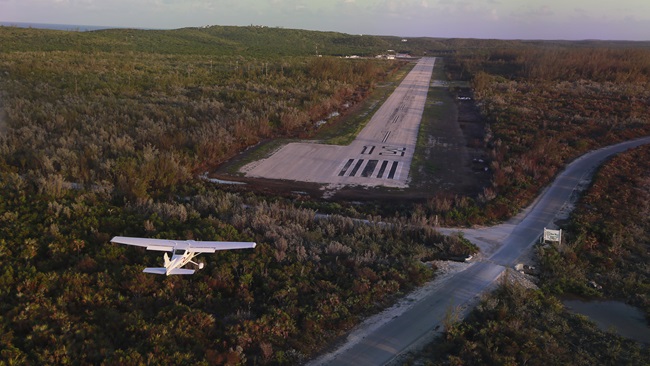Technique: On the rocks
Gravel bar landings the Alaska way

Photography by Mike Fizer
This little slice of heaven on Earth is interrupted with a reality check—Alaska Floats and Skis owner and instructor Don Lee cautions to be alert for bears. Judging by the amount of scat on the gravel bar, it seems that in late spring, with 17 hours of daylight and high temperatures reaching 60 degrees Fahrenheit, pilots might not be the only ones coming out of hibernation to explore.
Landing on gravel bars requires as much preparation and judgment as it does technique. A gravel bar “has to look pretty darn smooth” from the air before a pilot should even consider it as a landing area, Lee says. He recommends evaluating the area based on six criteria.
Length. The gravel bar must be long enough to be able to land and take off safely. To make sure it’s long enough for the maroon-and-white tailwheel-converted Piper PA–22 that he operates, Lee drags the tires on the gravel bar in a wheel-landing attitude and counts to eight. If he’s able to count to eight while on the gravel bar, then it’s long enough for operations.
Wind. “Be aware of your rising air and your descending air,” Lee says, “take off into rising air.” In short areas with slightly uneven terrain and nearby obstructions, it’s also imperative to take off and land into the wind.
Density of the ground. “Color is a key indicator for ground density. Lighter colors indicate sandy areas that are perfect for landings, while dark areas are too wet. “If you look at these gravel bars, there’s about, I used to say 50 shades of gray—but now I just say five shades of gray,” Lee jokes as we fly over the river. “They are all different colors, very subtle.” Sand with a glaze on it “sticks to the tires and throws it into the propeller when you get going, and the prop throws it back on the windshield. It’s not good,” he says. The muck also could make the tires kick rocks into the propeller.
Size of rocks. Rocks that are visible from the air are too big, and make the strip too rough even for an aircraft on tundra tires. “If you can see individual rocks from the air, they are the size of a softball,” Lee explains. In addition to excessive roughness on the gear and aircraft, large rocks can rip through a canvas control surface.
Avenues of escape. Note the terrain along the approach and departure path—does it rise steeply after the gravel bar on the banks of a river? Are trees at the end? Select a strip with an overrun area in case you land a little long or fast, or if you need to abort your takeoff.
Hazards. Watch for hazards in the air and on the ground. Check for traffic, power lines, and bridges that might stretch across the river. Clear the landing area for tree stumps, large rocks, and cutbanks where water has carved through the gravel bar. “If you can see them at all [from the air], they are too big,” cautions Lee, explaining that hitting one could take off the tailwheel. Also, keep an eye out for wildlife such as moose or bears that might wander onto the landing area.
Evaluating the gravel bar for these criteria helps to “eliminate risk in little slivers,” Lee says. Minimizing the risk helps increase safety margins for pilots, passengers, and the aircraft—the tool for accessing these treasures.
After overflying a number of gravel bars and ruling them out one by one based on the criteria, we finally spot one that looks good from a couple hundred feet up and passes the test after dragging the tires, so we set up for a pattern. A small island of trees leads up to the gravel bar that looks about the size of a postage stamp, even though it is probably about 2,000 feet long. Debris marks one end of the landing area, and a couple of stumps are scattered at the other end before the overrun area.
On short final, we put the PA–22 in the region of reverse command to become “totally dependent on thrust energy” and touch down for a tailwheel-low wheel landing. The technique allows the tundra tires to absorb the brunt of the roughness and protect the tailwheel.
Walking the gravel bar, we throw large rocks and dead logs out of the way to increase the width of the runway. The strip seems much longer walking it than it did when landing—or when peering over the nose for takeoff. The PA–22 bounces across the bar as we start the takeoff roll. Near the end of the so-called runway, I pull from 20 degrees of flaps to full flaps for a few moments to help hoist us into the air as we fly out over the overrun area and up the river. As the gravel paradise fades into the distance, the only thing we’ve left behind is our tire tracks—welcoming other pilots to stop in for a moment of peace and rest in the unspoiled wilderness.
Email [email protected]



